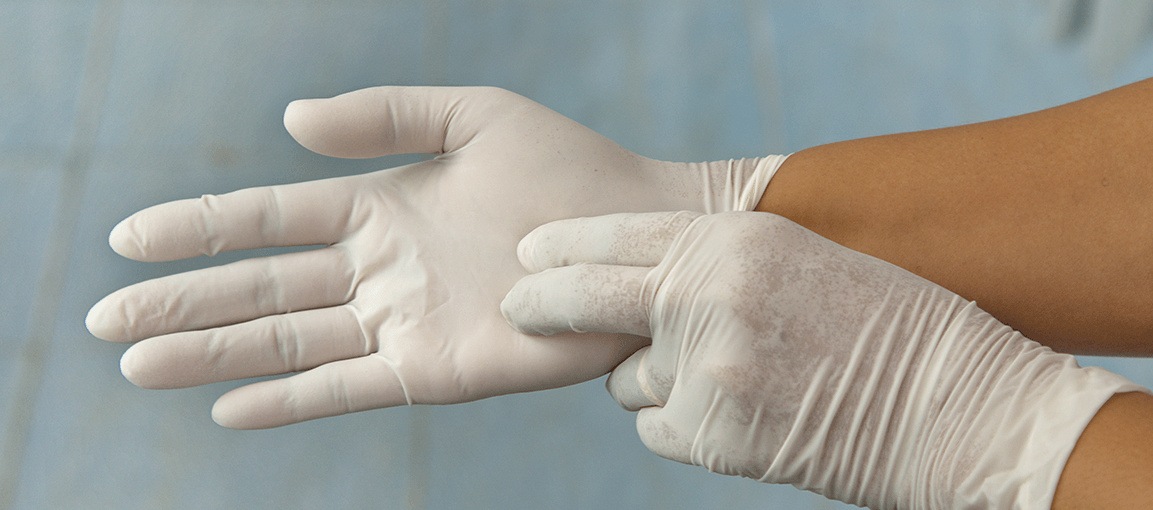
Disposable gloves are helpful – and often required – in many industries, but just like any tool or supply, there are best practices worth following that can ensure you get the best wear out of your gloves while maximizing barrier protection.
Here are seven best practices to follow for wearing disposable gloves.
1) Wash your hands first.
Though it might sound counterintuitive, washing your hands before you don gloves is a must for proper hand hygiene.
If you don’t wash your hands beforehand, after all, you could contaminate the surfaces of the gloves if you accidentally touch them with your bare hands. You could also spread germs if the gloves tear for whatever reason.
For proper handwashing techniques, follow the standards set out by the U.S. Centers for Disease Control and Prevention (CDC):
- Wet your hands with clean, running water (warm or cold), turn off the tap, and apply soap.
- Lather your hands by rubbing them together with the soap. Be sure to lather the backs of your hands, between your fingers, and under your nails.
- Scrub your hands for at least 20 seconds. Need a timer? Hum the “Happy Birthday” song from beginning to end twice.
- Rinse your hands well under clean, running water.
- Dry your hands using a clean towel or air dry them.
2) Before you put on a pair of gloves, check for punctures, tears, holes, or cracks.
Give your gloves a once-over before you start using them. Spot any pinholes? Cracking? Discoloration? If you see any of these, don’t hesitate to throw out those gloves and choose another pair.
A rule of thumb for glove donning: It’s better to be safe than sorry.
3) Replace your gloves if they look like they’re starting to wear out.
If you see any signs of degradation, it’s time to switch to a new pair of gloves. Another rule of thumb to follow is the more disposable gloves you wear, the better. Less is not more in the world of glove safety.
4) Don’t wash or reuse disposable gloves.
Disposable gloves are disposable for a reason. They’re designed for short-term usage, not to be reused. When in doubt, just grab another pair of gloves.
5) Wear right-sized gloves.
Besides a glove’s quality, the size of the disposable gloves you don is actually quite important as well. If your gloves don’t fit the size of your hands, the integrity of their application(s) may be compromised. You also may suffer from hand fatigue, your gloves might fall off, and the protection they’re supposed to provide may be affected.
It’s best to choose a pair of gloves that fit your hand as closely as possible but aren’t too tight. You want to have both comfort and a close fit.
6) Wash your hands between glove changes.
Again, handwashing is one of the most important – and effective – ways to prevent the spread of disease and contamination. So, whenever you throw out a pair of gloves, wash your hands before donning a new pair. We recommend that you follow the same guidelines outlined by the CDC that we mentioned in #1.
7) Have a latex allergy? Choose nitrile, vinyl, or cast polyethylene (CPE) gloves instead.
If you’ve ever had a latex allergy or even suspect that you might, look for gloves made of alternative materials. Nitrile, vinyl, and/or CPE gloves are excellent substitutes for latex gloves.
If you experience any of these symptoms – from dry, itchy, crusty skin with cracks or sores, to a runny nose, wheezing, difficulty breathing, swelling in the face, cramps and shock – you may be having an allergic reaction to latex. That’s where choosing the alternative option will be the wisest decision.
Conclusion
By following these seven steps, you can get the best wear out of your gloves and adhere to healthcare and food safety best practices.
